
For a special Christmas treat, I decided to indulge myself, along with my daughter and husband, in a family outing to the Museum of Fine Arts in Boston. Our purpose? To experience the captivating “Fashioned by Sargent” Exhibition. Inspired by the exhibit, I created a value study for four distinct paintings that I intend to bring to life on canvas.
The exhibition was truly exceptional. Although I had previously encountered only a handful of John Singer Sargent’s paintings in person, witnessing an entire exhibition dedicated to his artistry was nothing short of remarkable. Despite the necessity of purchasing tickets in advance and adhering to a specified entry time, the museum was bustling with visitors. Given that it was the final Saturday of the year, coupled with vacation weeks, the crowd was expected. Yet, each person was courteous, respectful, and patient, taking turns to appreciate the paintings, read the labels, and absorb the vastness of the artwork.
One aspect that particularly caught my attention was the sheer magnitude of each portrait—larger than life itself. From an artist’s perspective, I found myself contemplating the logistics of creating such expansive works. Did Sargent use a ladder to reach the top of the canvas? How did he transport these colossal paintings? Working on location and then moving the canvases back to his studio, I couldn’t help but wonder about the practicalities of such a process.
While the exhibition primarily focused on the select clothing worn by the sitters with actual dresses or accessories on display, my admiration extended beyond the mastery of draped fabrics, delving into the intricacies of materials like lace, velvet, silk, or embroidery. Naturally, the emphasis remained on the face and hands—the most challenging subjects for any artist. Ask any artist, and they’ll attest that portraying these features is an endless journey of learning, growth, and skill development.
Throughout my artistic career, my fascination with portraits and figurative work, particularly those crafted by the masters, has grown. As a large portion of my current work revolve around live event painting, capturing scenes in real time, I feel an overwhelming desire to immerse myself in the wealth of knowledge available to aid constantly improving my skills.
One technique I consistently revisit is the creation of small black and white value studies before embarking on a new painting. These studies, typically 8 x 10 or smaller, are executed with acrylic paints on canvas panels. I intentionally keep the details minimal, aiming to grasp a better understanding of the play between light and dark areas, which form the structural foundation of the painting.

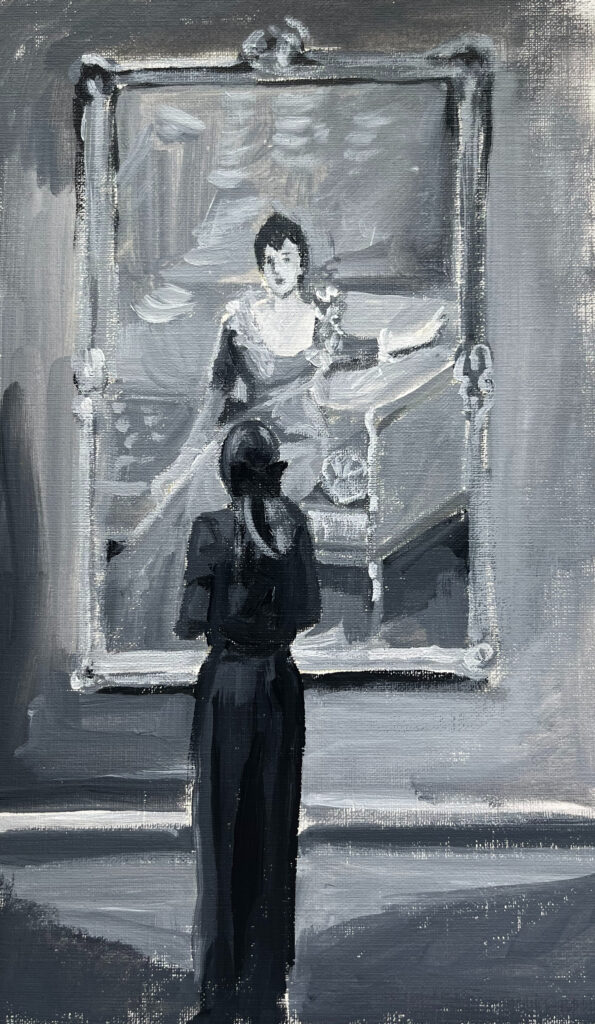
On my nightstand currently rests the book “Painting Portraits” by Everett Raymond Kinstler (1926-2019), a globally acclaimed American portrait painter, author, and art instructor. In his book, Kinstler underscores the significance of values—the lightness or darkness of colors—as a crucial element in color relationships. “…A piece of fabric, for example, maybe one color, but its value will change depending on the amount of light or shadow that strikes it surface. These values every bit as much as the color, determine the particular character of the fabric, Sargent was quoted as saying that color ‘is an inborn gift, but appreciation of value is merely training of the eye which everyone ought to be able to acquire.’ I agree with his statement , but would go one step further: If you see only color to the exclusion of value, you will find it difficult to acquire color relationships.”
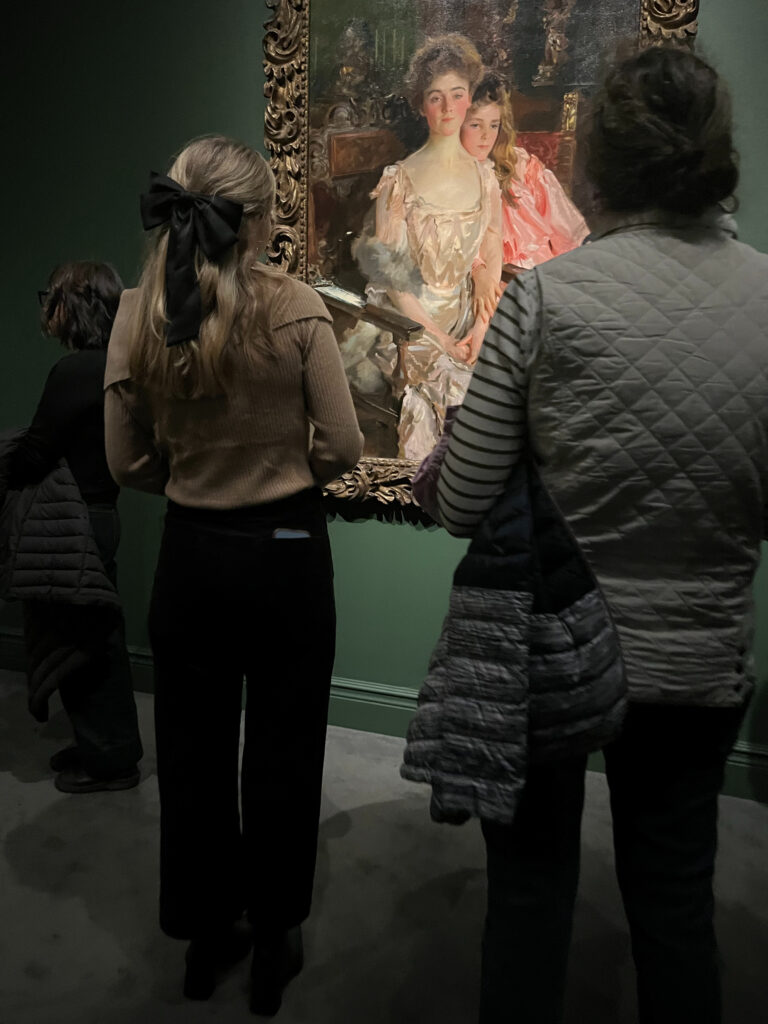
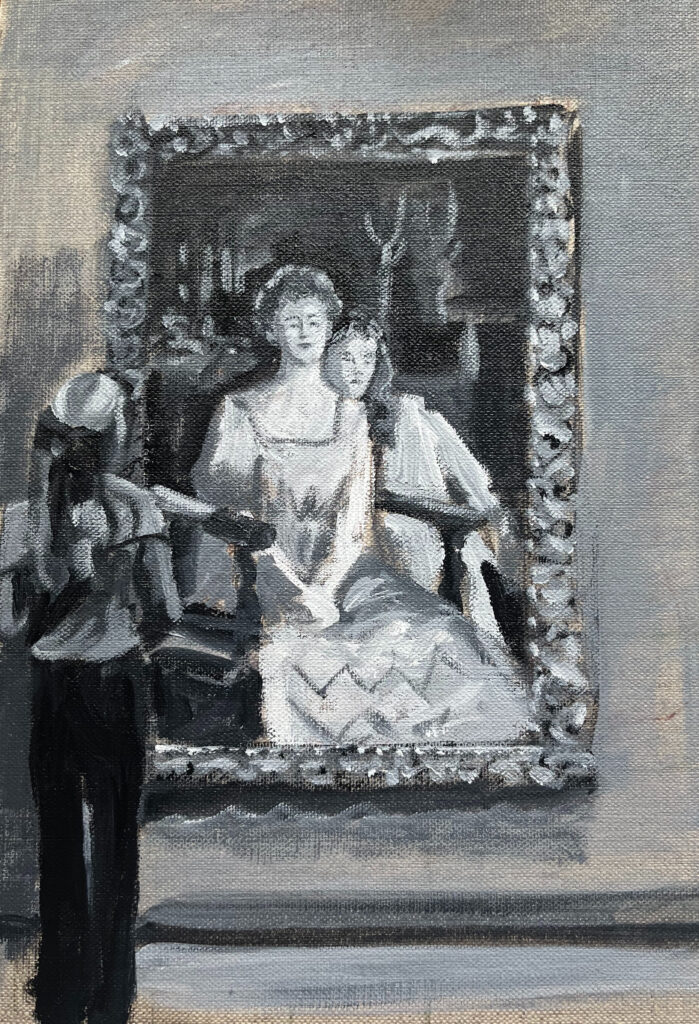
As we approached this particular piece, a synchronized sigh escaped both of us, accompanied by the shared sentiment, “I love this piece.” In our mutual admiration, we found a reflection of the profound love that exists between a mother and child. This artwork resonated deeply with both of us.
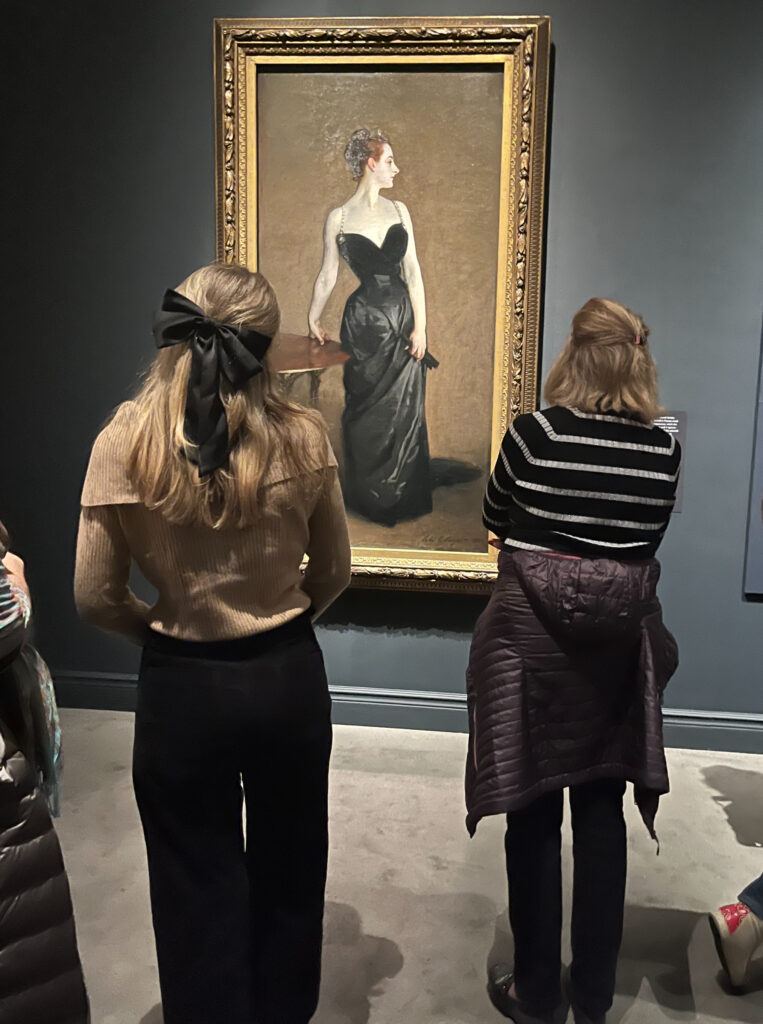
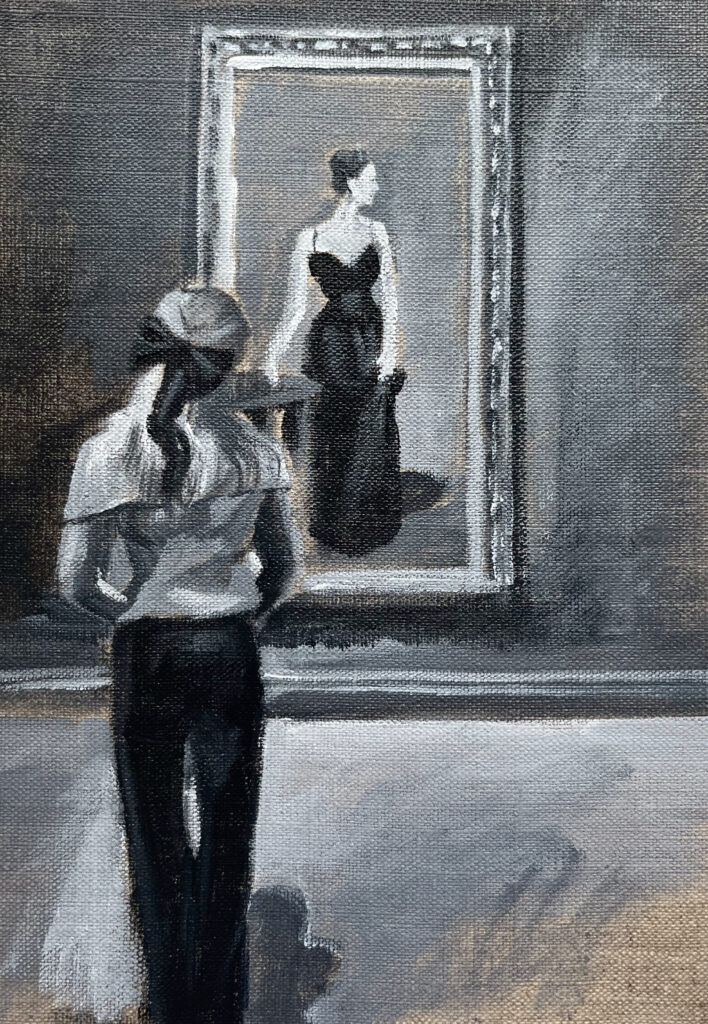
Another favorite within the exhibition is “Madame X,” with another portrayal of the same subject showcased at the Isabella Stewart Gardner Museum—a close associate of John Singer Sargent. The story behind this piece is truly captivating, illustrating how a portrait painting can profoundly alter the course of both the artist and the sitter’s life.
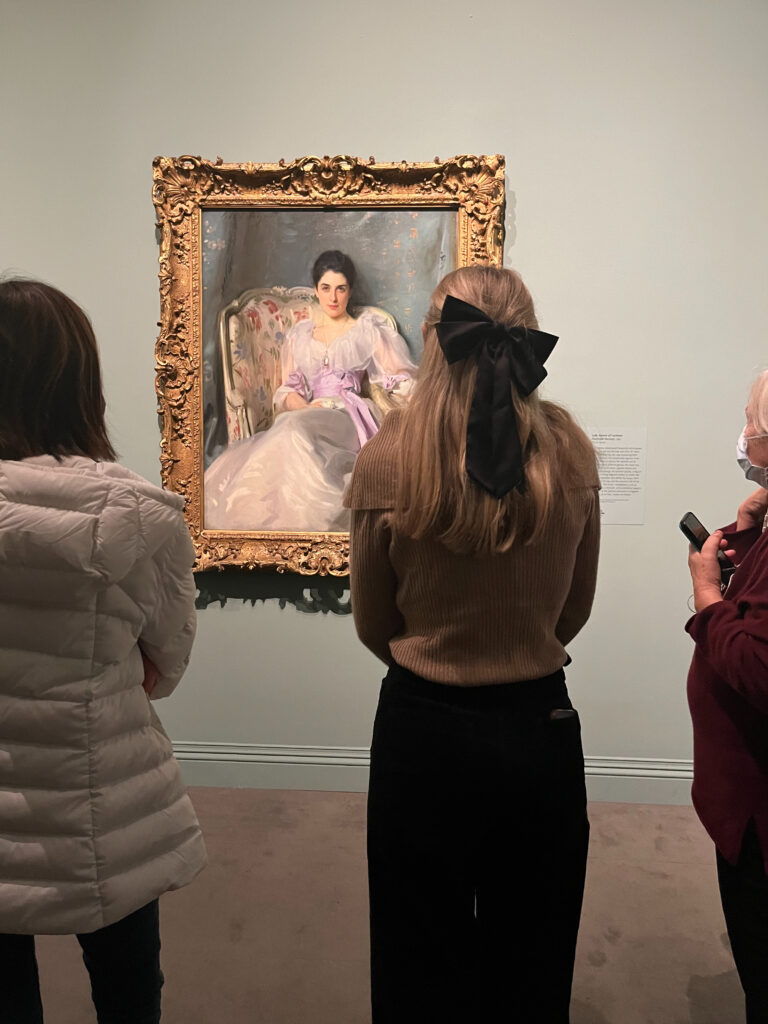
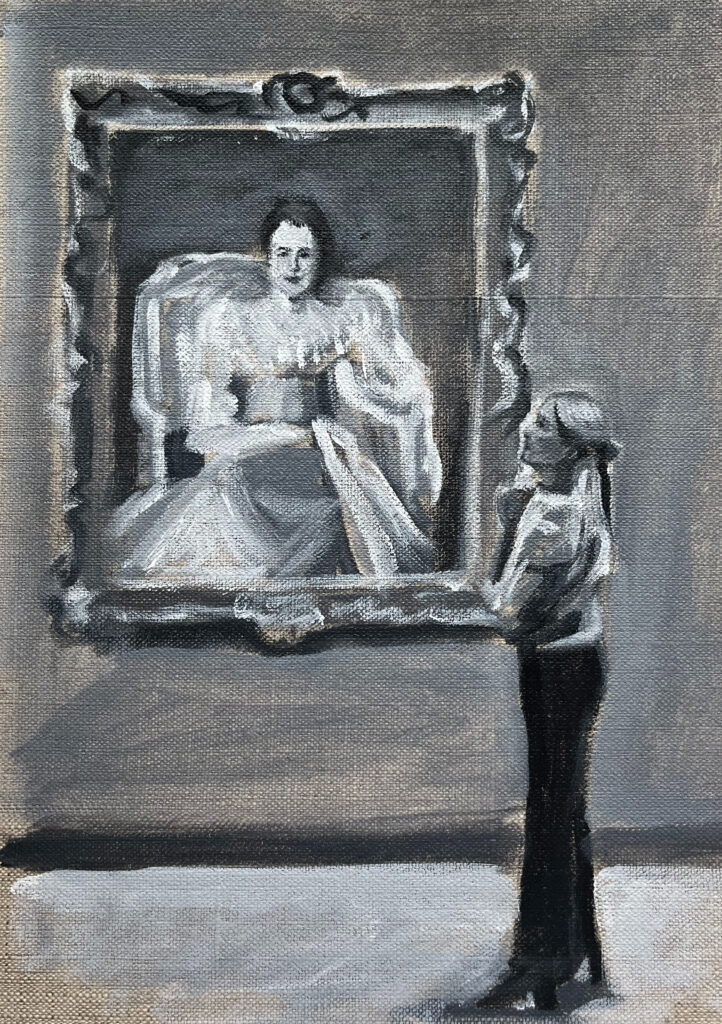
As I peruse through the photos, reminiscing about the delightful day spent with my family, I eagerly anticipate advancing these preliminary value studies to the next stage—translating them into larger, full-color compositions. Stay tuned for additional artist’s notes and the unveiling of more inspirational pieces in the near future.
Another favorite from the show is the “Fashioned by Sargent” * Book, which I purchased 3 copies, one for myself, my daughter and son. I’m looking forward to walking through the pages of this beautiful book with a cup of tea in hand on a relaxing Sunday afternoon. In a future post, I’ll share my review on the book and some of favorite highlights.
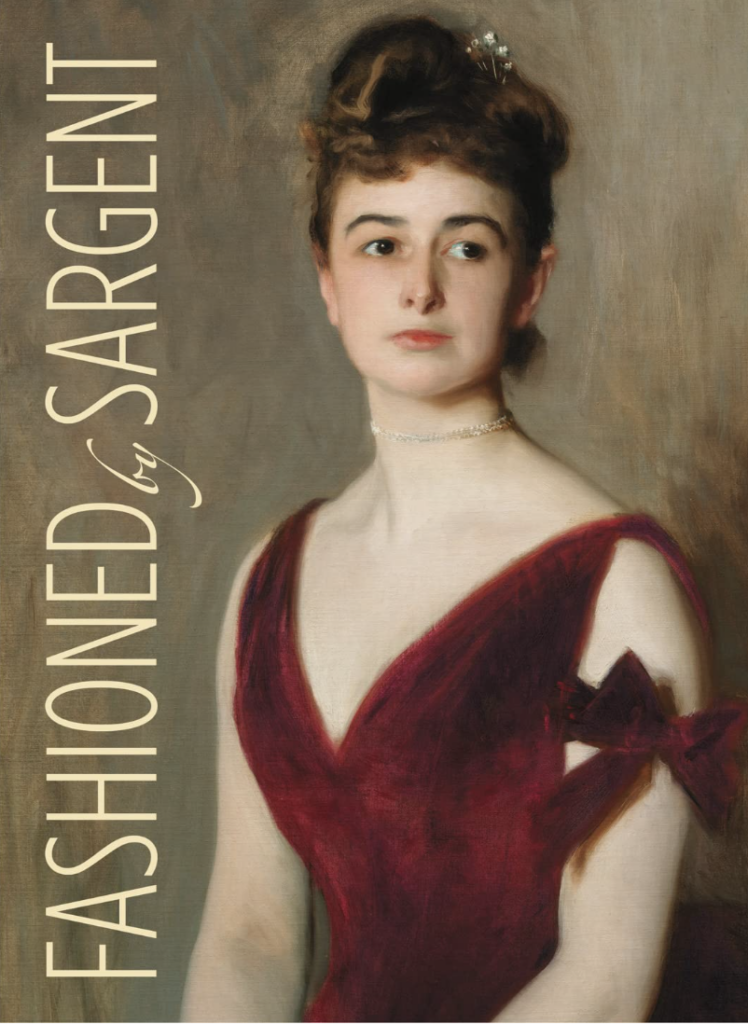
*As an Amazon Associate I earn from qualified purchases